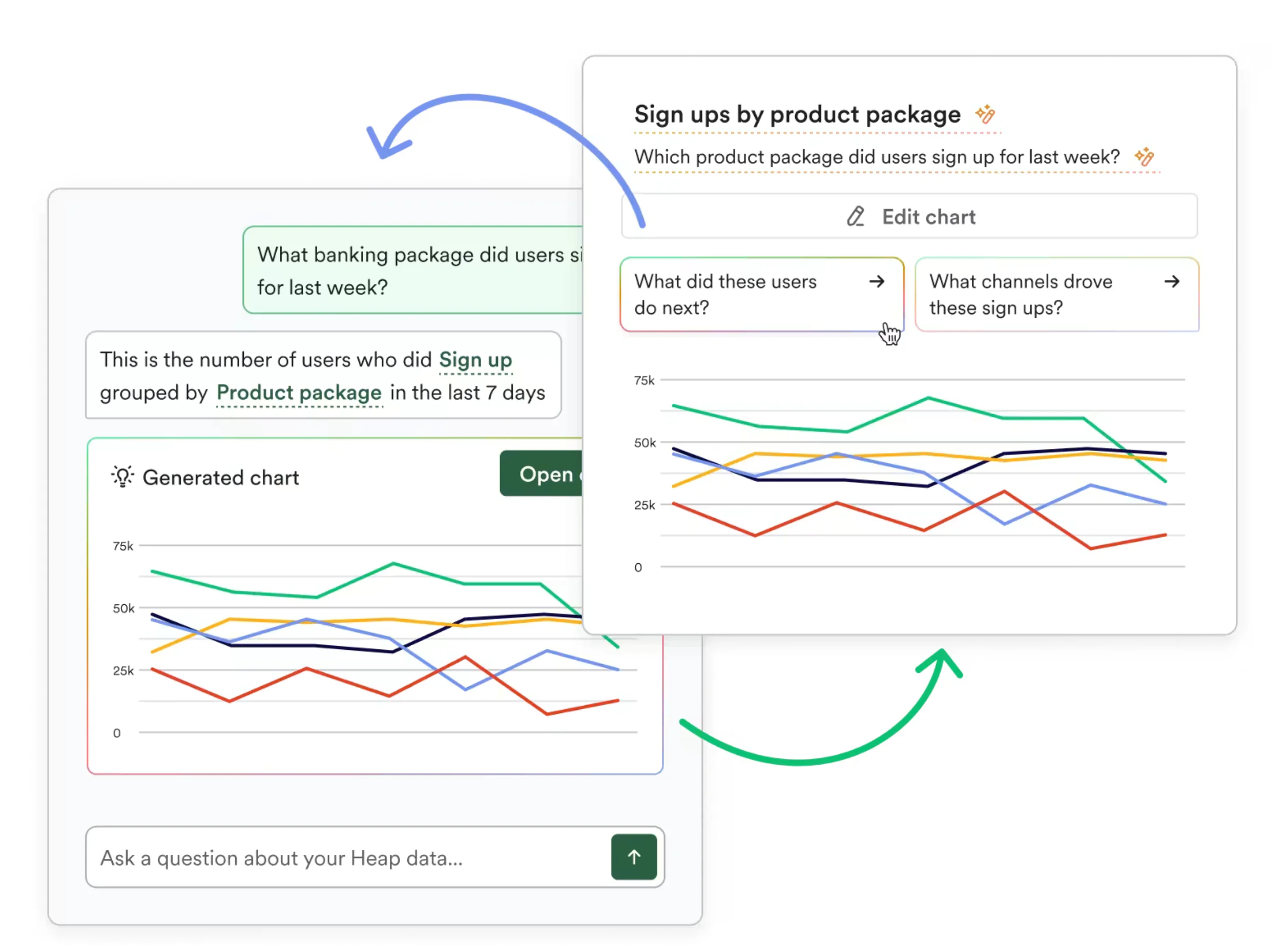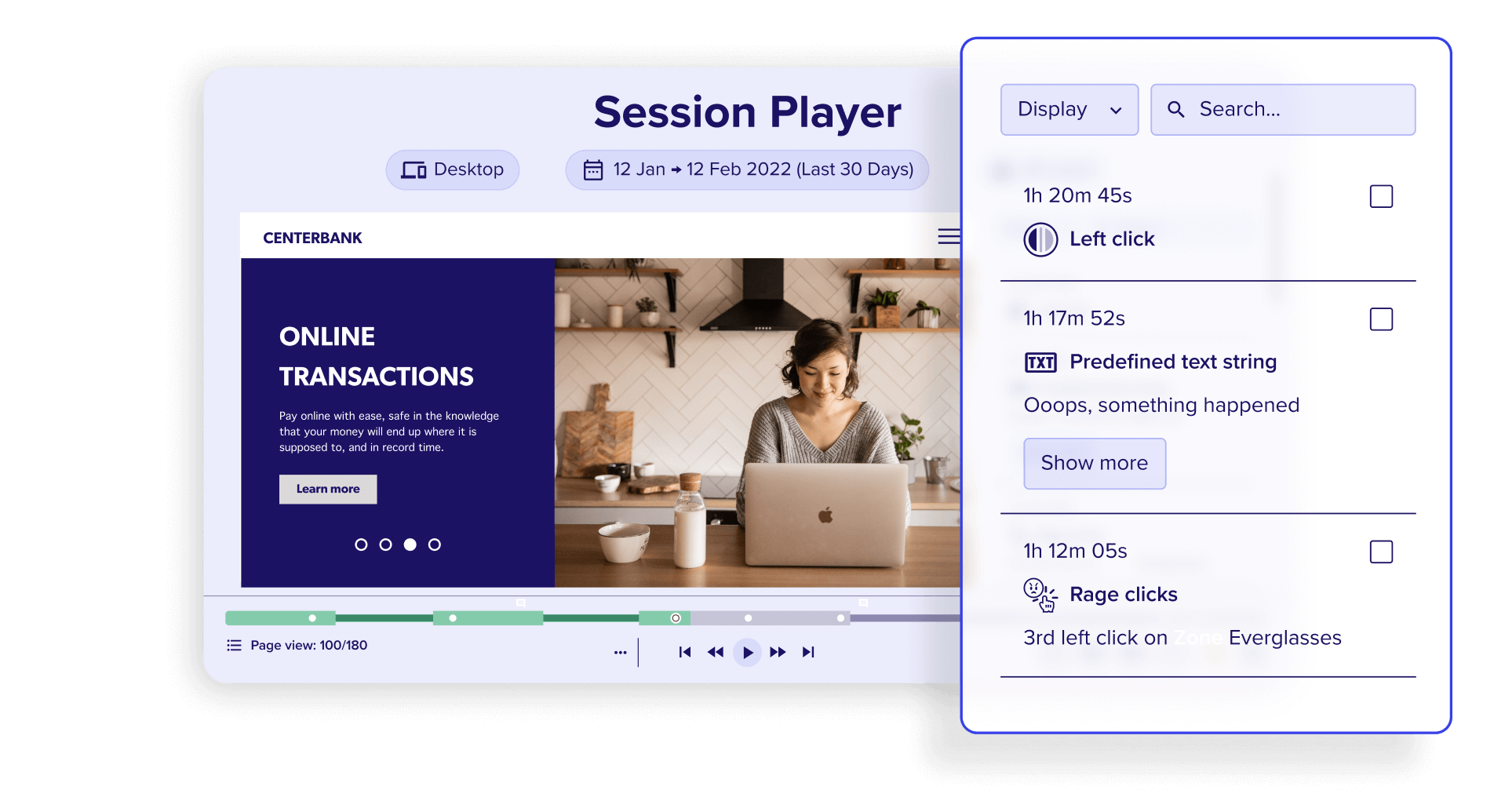
Take a product tour
Get to grips with Contentsquare fundamentals with this 6 minute product tour.

Sure, AI has become amazing at crunching numbers, analyzing data and forecasting trends using analytics—and its future looks even brighter. However, it still can’t get the full picture of user sentiment and context without humans. That’s where the voice of the customer (VoC) comes into play, adding insights AI can’t replicate. Together, they provide you with better user insights, leading to smarter decisions and more impactful outcomes.
Follow along as we examine the advancements AI brings to behavioral analytics, discuss the opportunities it creates for analysts and marketers, and highlight why blending AI with VoC is key to maximizing your business analytics’ effectiveness.

Take a product tour
Get to grips with Contentsquare fundamentals with this 6 minute product tour.
The bond between technology, businesses and their customers fuels progress. As behavioral analytics and AI tech advance, businesses create smarter operations, and customers enjoy better experiences.
The past two years have seen remarkable progress in analytics, automation and AI, helping companies tap into artificial intelligence for quicker and smarter insights about their users.
AI algorithms have a range of powerful applications; like in customer service, when they monitor social media chatter to focus on interpreting customer sentiment and suggest improvements, or in retail, where they analyze customer purchase histories, helping teams personalize marketing campaigns.
For digital experiences, an analytics AI steps in to save marketing, ecommerce, product and analytics teams from sifting through endless data and performing repetitive tasks: cleaning it up, identifying patterns and trends, spotting anomalies and forecasting trends based on historical customer data. This in-depth behavioral analytics helps teams understand user intent, motivations and pain points.
With the heavy lifting out of the way, they can focus on what truly matters—making sense of behavioral data and finding actionable insights that drive business growth and efficiency.
Here’s how you can put AI analytics to work for your business and what that looks like in practice:
Pro tip: Give your team the gift of easily accessible analytics with Contentsquare
Contentsquare’s AI CoPilot leverages generative AI, using the latest artificial intelligence technology to provide the fastest path to actionable insights.
Just ask questions about user behavior and AI CoPilot will answer with explanations and charts, automatically figuring out specifics like events, properties, filters, and groupings for you.
You can also ask follow-up questions, such as “How does this vary by marketing channel?” or “What should I look into next?” and get a personalized response that allows you to move fast and effectively.

AI CoPilot makes it easy for anyone to get started with analytics, no matter their experience.
When it comes to analyzing user behavior, AI algorithms are great at showing you the where and how—but what about the why?
While AI can show you where users drop off in their journey, it can’t explain why they found that particular step frustrating or confusing. That’s because AI can’t understand the context behind human behavior.
And relying on AI algorithms alone to analyze user behavior severely limits your understanding of it. An AI tool might not recognize if a specific design element is culturally insensitive or if a certain wording is off-putting to a particular audience. You need real people for that!
Real people are essential for providing the nuanced and emotional context that AI can’t replicate. The best way to collect these insights?
Voice of the customer or VoC feedback.
By collecting and evaluating customer feedback at scale—and at speed—VoC adds a human touch to your analysis, providing insights that AI alone can’t capture. Together, they help you connect the dots, understand the why behind the numbers and have a full data set to understand your customers.
VoC’s qualitative insights add context and depth to the numbers, revealing the reasons behind the behaviors and the emotions driving customer decisions.
To create experiences that drive conversions, you need to bridge the gap between user feedback and user behavior. The easiest way to do that is with Contentsquare VoC—where precision data meets real human insights.
Using intuitive AI-powered survey tools (that come with over 40 ready-to-use templates), create VoC surveys in seconds and collect responses in minutes.
Then, you can use our one-click AI Summary Reports feature to get an automatic overview of key issues and opportunities users raised in responses. And by automatically tagging responses and tracking user sentiment, you can see how often issues occur—and what their impact is.
Take a closer look at what you can achieve by combining VoC’s qualitative insights with AI’s analytical prowess:
Pro tip: Watch session replays to get more context into feedback and see the exact user experience.
VoC seamlessly integrates with Contentsquare’s Digital Experience Analytics (DXA) capabilities like Session Replay.
Replays show you how users engage with your site, where they click (and don’t) and how their behavior impacts your metrics. VoC and AI-generated insights help you uncover the ‘why’ behind this user behavior by collecting and analyzing direct feedback from your customers.

Session Replay lets you reconstruct individual visitor sessions to reveal hidden user behaviors in easy-to-read dashboards.
Looking ahead, behavioral analytics AI is set fto redefine the digital experience industry. Here’s a glimpse into what to expect in the near future:
Contentsquare’s Chief Produact Officer, Lucie Buisson and Chief Strategy Officer, Mohannad Ali give a sneak peek into the future of customer experience at CX Circle London 2024
“We want to make our unique data set available for you to try things out and experiment. So, you’ll be able to connect the data that we collect on your behalf to your own data warehouses, your own machine learning models and train them on our data. All so you can innovate, explore and come up with your own cutting-edge solutions.”
Mohannad Ali – Chief Strategy Officer at Contentsquare

Get a demo
Request a personalized demo with a digital experience expert!
Using AI helps analytics teams streamline their processes and improve the accuracy of their predictions. With the ability to handle complex data, AI extracts more valuable insights from vast datasets, which translate to quicker, more informed and better decision-making.
Yes, AI tools like those offered by Contentsquare can integrate analytics data from websites, mobile apps and other sources to create a holistic view of how customers interact with your business. This helps you identify key touchpoints in the customer journey, optimize user experiences and ultimately improve customer satisfaction and loyalty.
Yes! Our Contentsquare’s Voice of Customer product, powered by Hotjar, offers a variety of intelligent features that leverage AI to optimize the collection and analysis of customer feedback, such as: